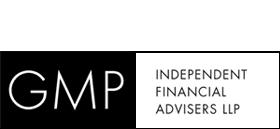Global Investment strategy and asset allocation
December 1st, 2010
Andy Brunner, chief investment strategist at OBSR, assesses the outlook for world markets and, based on this, offers his thoughts on asset allocation strategy After falling through much of the summer, GDP growth forecasts have stabilised with, in recent weeks, as many upward as downward revisions. In general, recent economic data has surprised positively with third-quarter GDP in China and the UK well above consensus estimates while US figures were in line. Not only did the third quarter end on a stronger note but the initial economic reports for October have exceeded general expectations. This was most evident in recently reported manufacturing purchasing managers’ indices (PMI) – a good lead indicator of activity levels. The Chinese index rose again, for the third month in a row, while both the UK and European indices turned upward for the first time in some months. Perhaps most surprisingly, given most economists had predicted another fall, the US ISM PMI rose sharply to its highest level since May, led by a sizeable jump in the new orders component – a key lead indicator. While the US economy has continued its recovery, the pace has proved insufficient to generate the self-sustaining expansion that was hoped for. The US Federal Reserve has consistently noted the high level of unemployment at nearly 10% and the continuous downward drift in core CPI. Both are conditions it finds unacceptable, given its growth and inflation mandates, and a further quantitative easing programme – variously known as QE2 and/or large scale asset purchases – should soon be underway. The Fed believes in using asset prices to stimulate growth, investment and – eventually – hiring and appears committed to do whatever is necessary to reinvigorate the economy. This of course had implications for the dollar and asset prices generally and the anticipation of some $500bn (£310bn) of Fed purchases of medium and longer-dated Treasury bonds, further expanding the Fed’s balance sheet, caused the dollar to depreciate significantly, with the trade-weighted measure down by 8% over the last few months. While traders initially front-ran Fed Treasury purchases, causing the 10-year bond yield to drop as low as 2.33% at one stage, prices backed up later in the month and bonds generally posted negative returns. Equity markets, by contrast, continued their rally and the S&P500 ended October 7% ahead over the year to date. US equities were also buoyed by better than expected economic numbers and a third-quarter results season that again surpassed forecasts by a wide margin and was accompanied by numerous companies raising both fourth-quarter and 2011 guidance. As is normal, most of the main developed stockmarkets rose alongside the US, the major exception being Japan where a double-dip is now considered a reasonable probability. The global second-half slowdown in industrial production and a strong yen have resulted in a very difficult period for Japanese stocks and the TOPIX index underperformed the MSCI World index again, falling another relative 5% in October. Third-quarter GDP data in the UK confounded the sceptics, rising at a 3.1% annualised rate. This scuppered thoughts of a QE2 programme, at least for now, although far bigger tests await the UK economy once government spending cuts and tax hikes really begin to bite next year. With such a large proportion of the UK’s larger companies’ profits earned overseas, however, the FTSE 100 has generally remained in the vanguard of the global stockmarket rally since the July lows. Europe has tended to match the UK in recent months with the German DAX index once again the lead main index. Emerging market equities continue to perform well with Asian stocks receiving a fillip from stronger than expected Chinese economic data that suggests its mid-cycle slowdown ended in the second quarter and that industrial production will pick up speed again in the region from the fourth quarter onwards. Naturally enough, a Chinese economic rebound, a falling dollar and a Fed poised to unveil its latest plan to spur the US economy were just the right ingredients to boost commodities. Should the Fed succeed in its efforts to revitalise the US economy, commodity prices could have an increasingly important influence on the inflation outlook for next year. Taking all this into consideration, our current asset allocation views are: * Equities: It has long been noted that progress would become more difficult for equity markets, although positive returns were always and still are forecast for both 2010 and 2011. The main issues still centre on government fiscal consolidation policies and the ability or otherwise of the US economy to transition to sustainable expansion. While concerns over government deficits and consolidation plans may well come back to haunt financial markets in future months, it is doubts over economic recovery that continue to impact most on investor sentiment. For those who believe, as we do, that a double-dip will be avoided, equity prices are still at very reasonable valuation levels. It could well take a few more months to determine whether the mid-cycle slowdown is over and some investors will prefer to wait and see how this develops. For investors of a braver disposition at least the potential rewards are more commensurate with the risks. As long as economic and profit expectations are met, then current valuations would suggest reasonable upside over the next six months but, even if they falter, there are some very decent dividend yields around. There is little to choose between the main geographic areas although pan-Europe and the emerging markets remain favoured. Currencies have been a key factor in relative returns and will likely remain so over the next several months. Investors should favour good-value, defensive growth stocks, high-yielders with strong balance sheets and companies with exposure to growth economies and markets. From today’s levels, gains over the medium term should outpace those for most other asset classes but an ability to withstand volatility is essential. * Bonds: The sheer scale of the downward move in government bond yields came as a surprise but reflects the deep unease felt by investors when hit by financial crises and perhaps the fact cash returns virtually nothing – and is expected to continue to do so for the best part of another year. The Fed should keep US yields, at least, at low levels and we remain ambivalent about the level of yields over the next few quarters although they should eventually back up. Relatively, corporate bonds are better value and should outperform governments but they are a source of higher income rather than capital gain. Riskier credits still offer the potential for reasonable returns with some further narrowing in spreads expected. * Property: After such a strong yield impact-led recovery in capital values, the pace of advance in the UK property market has slowed considerably. The weight of money chasing high-quality properties resulted in prime capital values rising by 25% year on year even as All Property rentals continued to fall. With banks now becoming keener to supply the market with portfolios of properties from their involuntarily built stockpiles and spent natural enthusiasm, this should inhibit further capital gains. Selectivity is important and central London, especially offices, remains a favoured area. With yields in excess of 3% above 10-year gilts for even some prime properties, however, the sector should outperform both cash and government bonds, but returns will be far lower than those achieved over the past 12 months. * Commodities: Predicting commodity returns is always a difficult call given the very broad spread, high volatility and problems associated with rolling over futures contracts on returns. As long as the global economic background develops as anticipated, however, favoured commodities, such as oil and copper, and those where there are clear long-term demand and supply imbalances, should continue to prosper. Industrial metal inventories have begun to unwind and in general, industry experts remain relatively bullish about medium-term prices for the key industrial metals and crude oil. Valuations of the major diversified miners are still well below April highs and look better value on spot prices and the assumption that economic growth in both US and China confirms current expectations. * Currencies: As ever currencies present all sorts of conundrums for investors. Will sterling continue to benefit from the UK’s newly found fiscal rectitude or will this be overridden by its deleterious impact on economic growth or an extension of quantitative easing? The best guess is that sterling may have some further upside against the dollar, but gains will be fairly limited. The euro could rally a little further given widening interest rate differentials but peripheral sovereign debt could undermine sentiment at any time. The squaring of growth and inflation needs with huge fiscal and growing current account deficits provides ammunition mostly for the bears of the dollar. Old Broad Street Research works for many of the best-known firms in the financial services industry, offering products and services to fund managers, product providers, wraps and platforms and large distribution firms as well as to individual advisers. The firm’s research is highly regarded by fund managers, product providers and professional intermediaries alike, with OBSR Fund Ratings widely acknowledged as an independent mark of quality. For all your investment requirements please call Mark or Clare at GMP Independent Financial Advisers LLP on 02072886400

